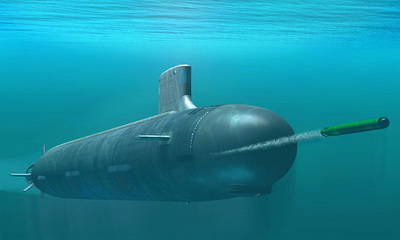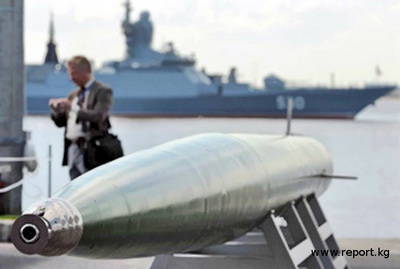Modern torpedo: what is and what will be
The main producer of torpedoes in Russia is OJSC Concern Marine Underwater weapon - Gidropribor. This enterprise during the international naval salon in 2009 year (“MVMS-2009”) presented to the public its developments, in particular 533 mm. universal remote-controlled electric torpedo ТЭ-2. This torpedo is designed to destroy the enemy's modern submarine ships in any area of the oceans.
The torpedo has the following characteristics: length with a coil (without a coil) of telecontrol - 8300 (7900) mm, total weight - 2450 kg., Mass of a combat charge - 250 kg. The torpedo is capable of speeds from 32 to 45 nodes at a distance of 15 and 25 km., Respectively, and has a service life of 10 years.
The torpedo is equipped with a homing acoustic system (active on a surface target and active-passive on a submarine) and non-contact electromagnetic fuses, as well as a sufficiently powerful electric motor with a noise reduction device.

The torpedo can be installed on submarines and ships of various types and, if the customer so desires, is made in three different versions. The first TE-2-01 assumes mechanical, and the second TE-2-02 electrical input data on the detected target. The third variant of the TE-2 torpedoes has smaller weight and size parameters with a length of 6,5 meters and is intended for use on NATO-class submarines, for example, on German submarines of the 209 project.
The torpedo TE-2-02 was specially developed for the armament of 971 nuclear-powered submarines of the Bars class project, which carry rocket and torpedo weapons. There is information that a similar nuclear submarine under the contract was purchased by the naval fleet India
The saddest thing is that such a torpedo already does not meet a number of requirements for such weapons, and is inferior in its technical characteristics to foreign counterparts. All modern torpedoes of western production and even new Chinese-made torpedo weapons have hose telecontrols. On the same domestic torpedoes used towed coil - a rudiment almost 50-year-old. What actually puts our submarines under the shooting of the enemy with much greater effective shooting distances. Not one of the domestic torpedoes presented at the IMDS-2009 exhibition did not have a telecontrol hose reel, all of them being towed. In turn, all modern torpedoes are equipped with a fiber-optic guidance system, which is located on board the submarine, and not on the torpedo, which minimizes interference from false targets.
For example, the modern American long-range torpedo Mk-48 developed to hit high-speed underwater and surface targets can reach speeds up to 55 and 40 nodes at distances of 38 and 50 kilometers, respectively (at the same time, evaluate the capabilities of the domestic torpedoes ТЭ-2 45 and 32 of a node at distances 15 and 25 km). The American torpedo is equipped with a multiple attack system, which is triggered by the loss of a torpedo target. Torpedo is able to independently detect, capture and attack the target. The electronic filling of the torpedo is configured in such a way that allows you to hit enemy submarines near the command post, located behind the torpedo compartment.

The only positive moment at the moment can be considered the transition in the Russian fleet from thermal to electrical torpedoes and rocket-fired weapons, which are an order of magnitude more resistant to all sorts of disasters. Recall that the submarine "Kursk" with 118 members of the crew on board, who died in the Barents Sea in August 2000, sank as a result of a thermal torpedo explosion. Now the torpedoes of the class in which the submarine submarine carrier Kursk was armed have already been taken out of production and are not being operated.
The most likely development of torpedo weapons in the coming years will be the improvement of the so-called cavitating torpedoes (they are also rocket-torpedoes). Their distinctive feature is the nasal disc with a diameter of about 10, see, which creates an air bubble in front of the torpedo, which helps to reduce water resistance and allows us to achieve acceptable accuracy at high speeds. An example of such torpedoes is the domestic Squall torpedo rocket of diameter 533 mm., Which is capable of speeds up to 360 km / h, the mass of the warhead 210 kg., The torpedo does not have a homing system.
The spread of this type of torpedoes is hampered not least by the fact that at high speeds of their movement it is difficult to decipher the sonar signals to control the rocket-torpedo. Such torpedoes use a jet engine as a propeller instead of a propeller, which in turn makes it difficult to control them; some types of such torpedoes can only move in a straight line. There is information that at present, work is underway to create a new model "Squall", which will receive a homing system and an increased weight of the warhead.
Information